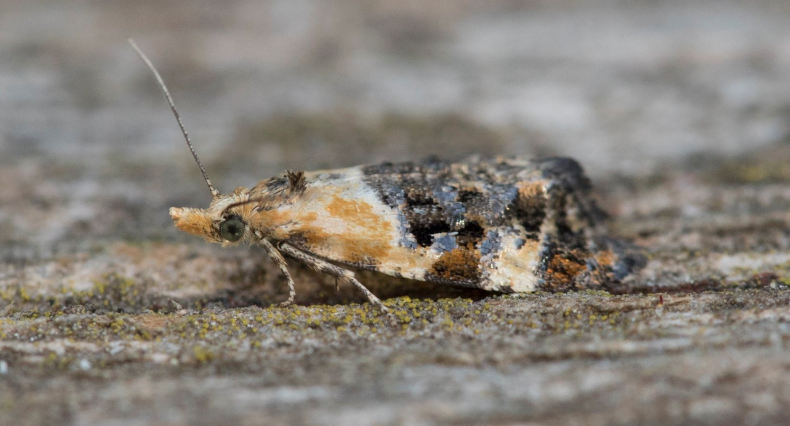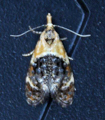Phtheochroa schreibersiana
Checklist Number49.093 [B&F: 0922]
Verification
Record will require further evidence, at least a good photograph, unless CMR is aware recorder has confidence in identification
Classification
| Family: | Tortricidae |
| Subfamily: | Tortricinae |
| Genus: | Phtheochroa |
| Species: | schreibersiana |
| Authority: | (Frölich, 1828) |
Formerly very local in parts of southern England, but presumed extinct until 2010 when one was trapped in Buckinghamshire; subequently, 2017 saw three records, with more to follow across several southern counties in 2018. This reappearance may be due to introductions with planted tree saplings. First recorded in Hampshire in 2020. Wingspan 11-15 mm. Readily distinguished by the bright ochreous basal area and contrasting dark coloration of the distal half of the forewing with the distinctive metallic spots, and the area of yellowish coloration forming a conspicuous quadrate spot on the costa [Bradley]. Larva feeds within stems of Elm, Black Poplar and Bird Cherry, forming galls.


The abundance in each month is indicated as follows:
 No records
No records Very occasional
Very occasional Irregular
Irregular Uncommon
Uncommon Off-peak, but not unusual
Off-peak, but not unusual Off-peak, but not unusual
Off-peak, but not unusual Main flight time
Main flight time| J | F | M | A | M | J | J | A | S | O | N | D | |
|---|---|---|---|---|---|---|---|---|---|---|---|---|
| Adult |  |  |  |  |  |  |  |  |  |  |  |  |
| Larval |  |  |  |  |  |  |  |  |  |  |  |  |
Records by week (adult)
Records by week (larval)
VC12 North Hampshire
| Site | Date | Quantity | Recorder | Stage |
|---|---|---|---|---|
| Yateley (SU86) | 26/05/2020 | one | Josie Hewitt | Adult |


